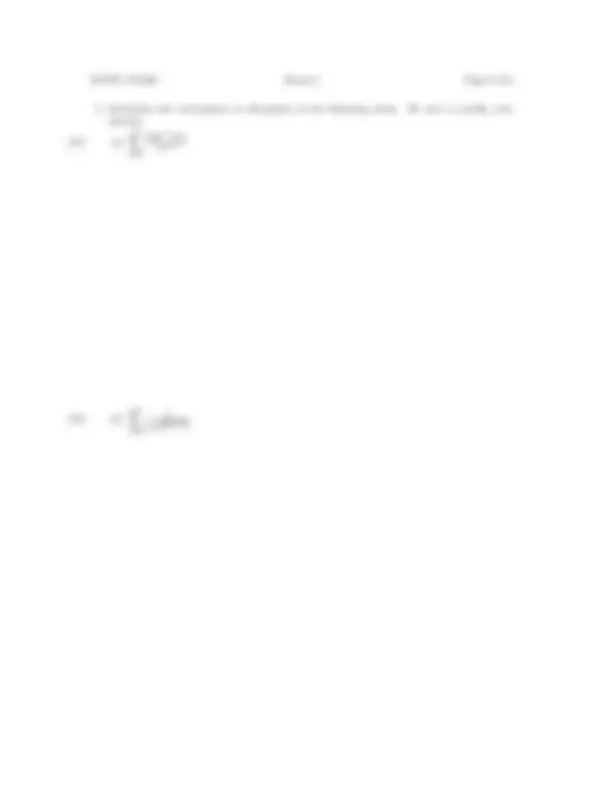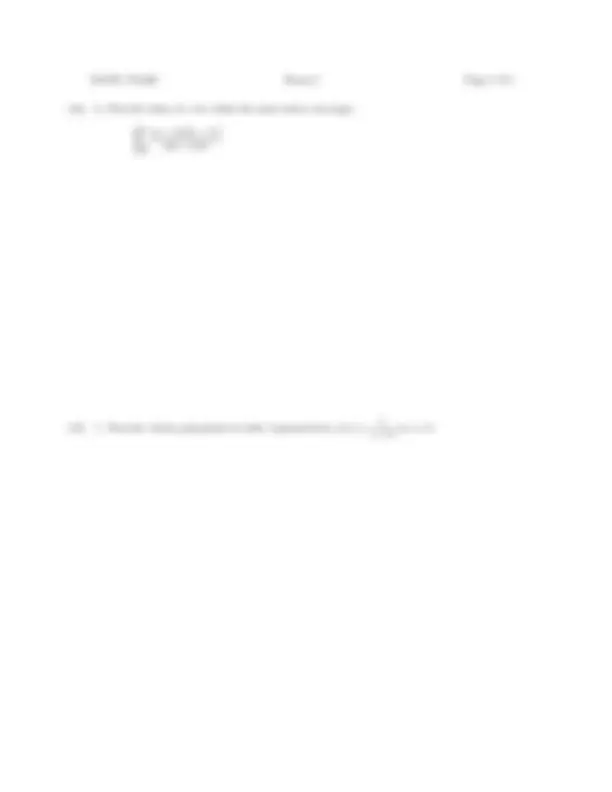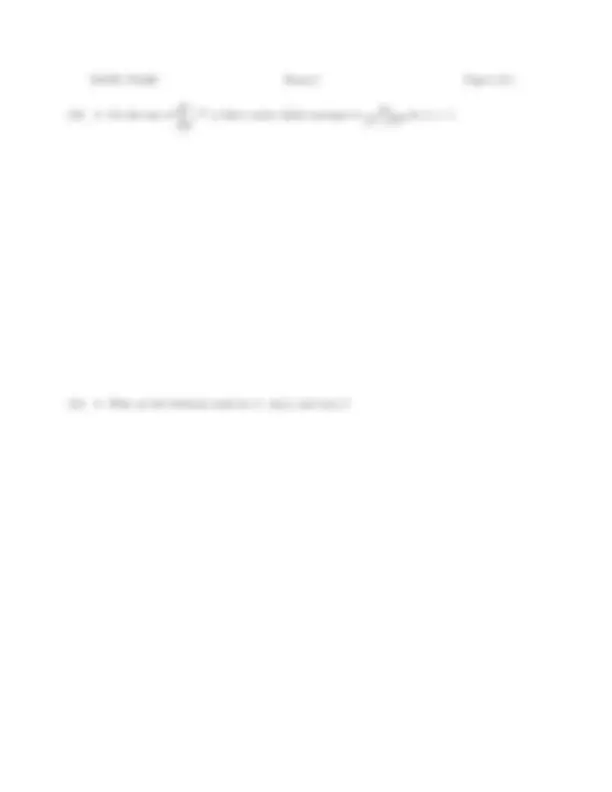





Study with the several resources on Docsity

Earn points by helping other students or get them with a premium plan


Prepare for your exams
Study with the several resources on Docsity

Earn points to download
Earn points by helping other students or get them with a premium plan
Community
Ask the community for help and clear up your study doubts
Discover the best universities in your country according to Docsity users
Free resources
Download our free guides on studying techniques, anxiety management strategies, and thesis advice from Docsity tutors
Material Type: Exam; Class: Calculus II; Subject: Mathematics; University: Boise State University; Term: Unknown 2008;
Typology: Exams
1 / 5

This page cannot be seen from the preview
Don't miss anything!




Math 175- July 17, 2008
This test consists of 100 points and 5 pages, none of which is intentionally left blank. Take a few seconds right now to be sure you have all the pages. The point value of each question is to the left of the question number. Show all your work in the space provided. If you run out of room for an answer, continue working on the back of the page. Your answers must be justified by your work.
(10) 1.A sequence {an} is defined as follows
an =
sin(n) n Find the limit of the sequence.
(10) 2.The sequence defined recursively by
a 1 = 3 an =
10 + 3an− 1 for n ≥ 2
is non-decreasing and bounded above. Find
lim n→∞ an
(10) 3.Write the first few terms of the series and then find the sum of the series
∑^ ∞
n=
(−1)n 4 n+
(10) 4.Find the sum of the series
∑^ ∞
n=
(n + 2)(n + 3)
(10) 6.Find all values of x for which the series below converges.
∑^ ∞
n=
(n + 1)(2x + 1)n (2n + 1)2n
(10) 7.Find the Taylor polynomial of order 3 generated by f (x) =
x + 2
at a = 0
(10) 8.Use the sum of
n=
x^2 n^ to find a series which converges to 2 x (1 − x^2 )^2
for |x| < 1
(10) 9.What are the Mclaurin series for ex, sin(x) and cos(x)?